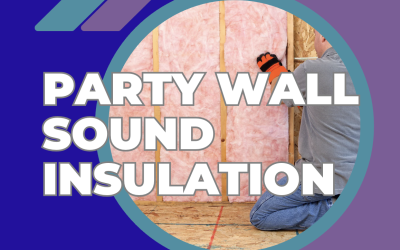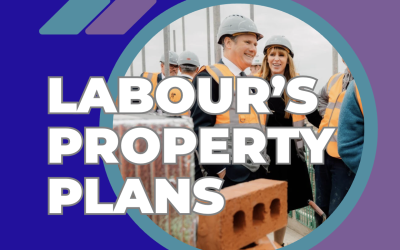Purchasing a home is a significant milestone that involves careful planning, informed decisions, and due diligence.
Among these steps is a property survey. For those who don’t know, a property survey is a comprehensive and robust assessment of the overall condition of the property.
It is undertaken by a qualified surveyor with the objective of identifying structural concerns, maintenance issues, repairs, and providing informed observations on the property. The surveyor’s findings are presented in a report that identifies both the defects and the cost of remedy in a clear and concise manner.
CONDITION RATINGS
As part of the report, the surveyor uses condition ratings to ensure full understanding of the defect’s severity. These follow the industry-wide format as follows:
Condition Rating 1: Green: This means that there is no repair currently needed – It’s the ideal outcome.
Condition Rating 2: Amber: This means that the item being inspected has a defect that requires repairing or replacing. It’s worth noting that the defect is not considered serious or urgent. This is a medium rating confirming that the item may need attention at some point in the near future.
Condition Rating 3: Red: This means there are defects that are serious and/or need to be repaired, replaced, or investigated urgently. This is the worst rating possible and will mean urgent attention and likely cost is required.
COST RATINGS
As part of our efforts to lead the way within the profession, we also go a step further and use a cost rating system to ensure you have a full understanding of the cost implications of the issues our surveyors find.
Low Cost: These are costs towards the lower end of the spectrum, classified as less than £1,000.00.
Mid Cost: These are costs towards the mid end of the spectrum, classified as £1,000.00 – £5,000.00.
High Cost: These are costs towards the upper end of the spectrum, classified as more than £5,000.00.
DIFFERENT SURVEY OPTIONS AVAILABLE
We offer two different property surveys:
Level 2 Survey: Formerly known as an RICS Homebuyer Report, this survey offers an in-depth inspection assessing all issues and concerns that will influence the property’s value, safety, and standing. The report sets out all of the surveyor’s recommendations on what needs to be spent and what action should be taken to remedy the issues. We advise these are best suited to flats.
Level 3 Survey: Commonly referred to as a Building Survey, Full Building Survey, or Structural Survey, this survey is similar to a Level 2 survey but goes into much more detail on both the issues located and the surveyor’s recommendations to remedy them. We advise these are best suited to houses.
WHY YOU NEED A PROPERTY SURVEY
While it might be tempting to save money and skip the property survey, especially if a home appears issue-free on the surface, it’s the only way to uncover hidden defects.
Properties often hide issues such as cracking, subsidence, damp, timber pests, roof deterioration, invasive plants, or mould.
Purchasing a property with these issues can result in significant unknown costs. By having a property survey completed, you will be made aware of any defects and the cost implications.
The property survey not only fully informs you but also provides you with negotiation power. Armed with factual insights, you can request price reductions or ask for repairs to be completed before finalising the deal.
WHEN TO ARRANGE A SURVEY
We recommend having the property survey completed once your mortgage provider has completed their valuation and confirmed they’re prepared to provide you with finance on the property. We also have another article on the difference between property surveys and mortgage valuations.
WHAT IF THE PROPERTY SURVEY FINDS ISSUES
First and foremost, don’t panic. The very purpose of the property survey is to ensure you’re fully aware of the issues. We’ve put together easy-to-follow steps to aid in your property purchase decision post-survey:
Speak with the Surveyor:
Once you’ve digested the report, speak with the surveyor who completed it. Discuss the issues that have raised your concerns so that you have a clear understanding of what they mean for you as the property owner. A handy tip is to book this conversation with the surveyor at a preferred time. Surveyors spend the majority of their working hours on-site, so ensure the surveyor is at their desk and has the report to hand.
Get Repair Costs:
Our Cost Rating system will give you a firm understanding of your cost liability. For severe defects such as damp, cracks, subsidence, or pests, always speak to the surveyor to understand the cost. Additionally, speak with contractors or specialists (such as damp proofing companies or engineers) to fully understand the cost implications.
Be Prepared to Walk Away:
Present the report to the selling agent to aid in renegotiations on the agreed sale price. Ensure your revised offer reflects the cost to remedy any issues you weren’t aware of. If negotiation fails and the property survey findings are too costly, be prepared to walk away. There’s always another home out there waiting to become yours.
SKIP A PROPERTY SURVEY AT YOUR OWN RISK
A property survey isn’t a formality; it’s an essential part of ensuring that you fully understand what you’re purchasing.
Understanding the issues at the property ensures you’re fully informed and could save you from costly repairs in the near future.
If you would like to obtain a fixed cost quotation, view available booking times, schedule and book the Property Survey we advise using our industry first instant quote feature.




